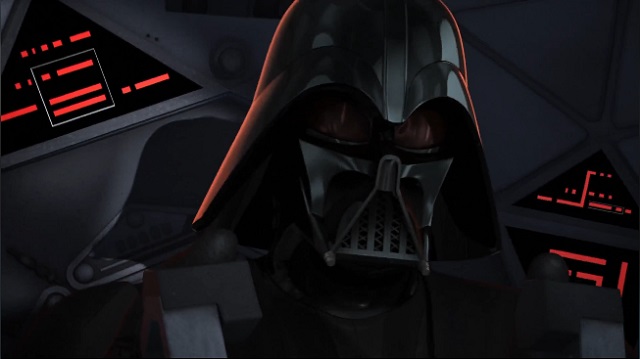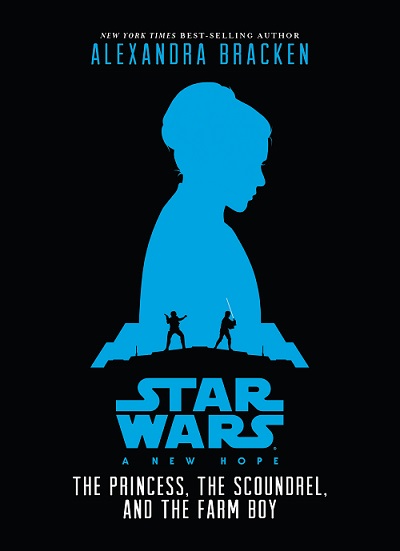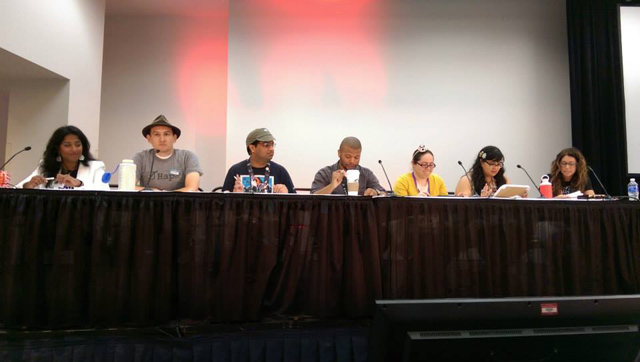![rsz_menace_final_300dpi-970x545[1]](http://eleven-thirtyeight.com/wp-content/uploads/2015/08/rsz_menace_final_300dpi-970x5451.jpg)
In case you hadn’t noticed, I have a pretty strong interest in royalty and in politics. My passion is shared by my old friend, Bria LaVorgna. Bria and I have decided to co-write a piece on monarchy in Star Wars, presented alternatingly on the sites we write for: Eleven-ThirtyEight and Tosche Station. We think that the close connection Star Wars has to monarchy is pretty unusual and worth examining in detail. We’ll start out with a brief survey of monarchy in Star Wars, before moving on to an examination of how monarchy works on three prominent Star Wars planets.
(Programming note: I’ll update this intro post with links to each piece on Tosche Station and Eleven-ThirtyEight as they go up this week. Look for a new piece each day from now through Thursday!)
Part II: A New Naboo (Tosche Station)
Part III: The Hapans Strike Back (Eleven-ThirtyEight)
![c6256992fe890afeb7825666927b7f0d[1]](http://eleven-thirtyeight.com/wp-content/uploads/2015/08/c6256992fe890afeb7825666927b7f0d1-182x300.jpg) Unusually among science fiction franchises, Star Wars has a strong attachment to monarchy. This is partly due to the nature of Star Wars as space opera rather than pure science fiction, but it’s not really a genre issue. Monarchy is part of the DNA of Star Wars and always has been. Initially, Princess Leia served as the princess figure in the fairy tale conception of Star Wars (one of many inspirations for Star Wars, including myth, serial adventures, etc.) and Leia proves in the very first film that she’s not merely a damsel in distress. But fairy tale inspirations only get us part of the way — monarchy is a persistent and pervasive part of Star Wars, reflected in the Naboo of the prequel trilogy, Hapes of the Expanded Universe, and a myriad of monarchies in the Clone Wars. In fact, The Clone Wars made such a use of monarchies that worlds that the EU had established as democracies (Mon Calamari) ended up becoming monarchies. George Lucas had a pretty direct hand in The Clone Wars, and he obviously crafted the story of the saga, so monarchy is just a part of his political conception of Star Wars. But the question is — why? Why does a story about the struggle between light and dark, between democracy and tyranny, feature monarchies so centrally?
Unusually among science fiction franchises, Star Wars has a strong attachment to monarchy. This is partly due to the nature of Star Wars as space opera rather than pure science fiction, but it’s not really a genre issue. Monarchy is part of the DNA of Star Wars and always has been. Initially, Princess Leia served as the princess figure in the fairy tale conception of Star Wars (one of many inspirations for Star Wars, including myth, serial adventures, etc.) and Leia proves in the very first film that she’s not merely a damsel in distress. But fairy tale inspirations only get us part of the way — monarchy is a persistent and pervasive part of Star Wars, reflected in the Naboo of the prequel trilogy, Hapes of the Expanded Universe, and a myriad of monarchies in the Clone Wars. In fact, The Clone Wars made such a use of monarchies that worlds that the EU had established as democracies (Mon Calamari) ended up becoming monarchies. George Lucas had a pretty direct hand in The Clone Wars, and he obviously crafted the story of the saga, so monarchy is just a part of his political conception of Star Wars. But the question is — why? Why does a story about the struggle between light and dark, between democracy and tyranny, feature monarchies so centrally?
![Servants_of_the_Empire_Imperial_Justice[1]](http://eleven-thirtyeight.com/wp-content/uploads/2015/07/Servants_of_the_Empire_Imperial_Justice1-705x1024.png) In what’s becoming a regular feature on this site, we’re publishing yet another rave review of a Jason Fry novel. It’s not our fault – Jason has a tendency to release high-quality novels at an impressive pace, so blame him for the lack of variety. Although that’s pretty unfair, because the best thing about Jason’s novels is that each of them are good for different reasons and allow us to focus on different aspects of the Star Wars universe. His
In what’s becoming a regular feature on this site, we’re publishing yet another rave review of a Jason Fry novel. It’s not our fault – Jason has a tendency to release high-quality novels at an impressive pace, so blame him for the lack of variety. Although that’s pretty unfair, because the best thing about Jason’s novels is that each of them are good for different reasons and allow us to focus on different aspects of the Star Wars universe. His 
 Last week, StarWars.com
Last week, StarWars.com 
